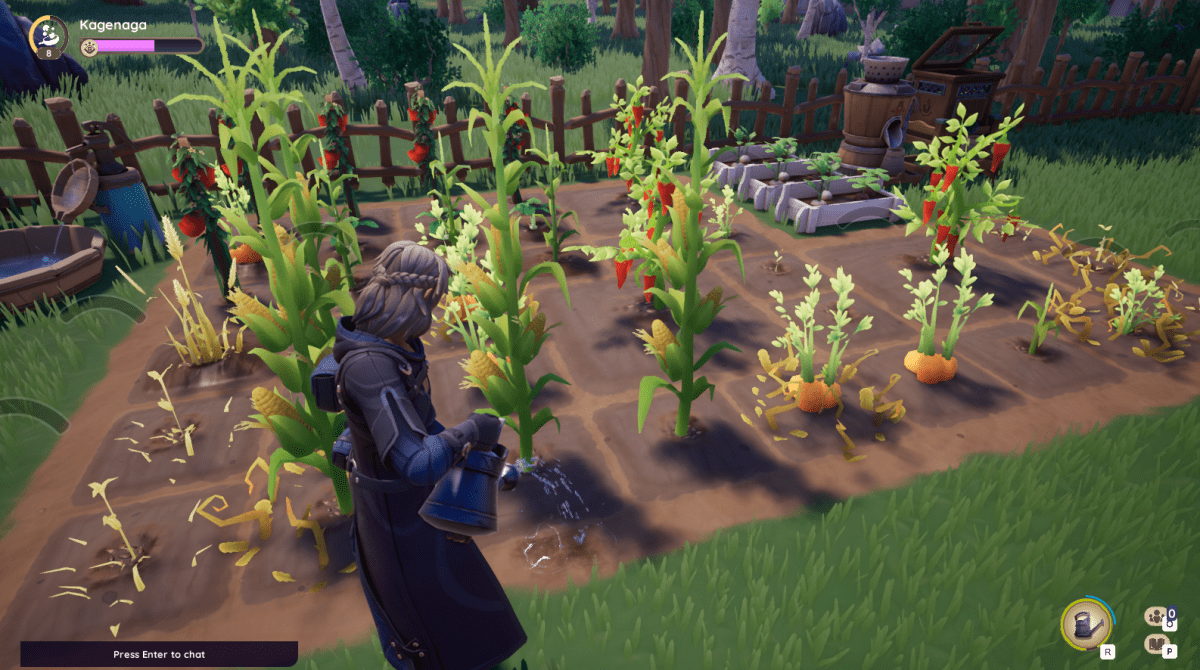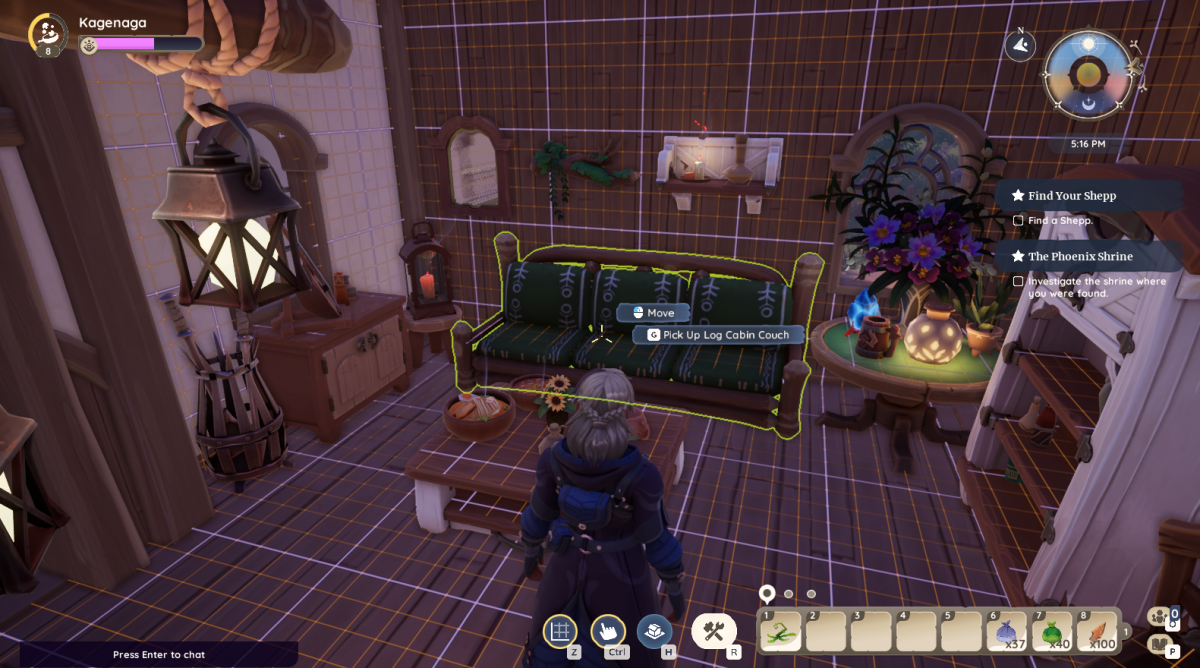In this line of work, there is the immense pressure to make everything you consume, everything you touch or experience or enjoy, into content. Bills need to be paid, medical emergencies need to be covered, and maybe you want to splurge on some take-out. Writing is hard work, and it rarely ever pays. It’s why you’ll see a thousand different “How to’s” or the long list of guides trotted out day after day, because we have to make end’s meet. As I’m writing this opening, I’m aware of how ironic this is. I’m writing about a game I enjoy and making content out of it. I’m writing about how Palia is the game I’ve grown to love in my downtime, where I’m able to live the fantasy of home ownership and find some peace of mind fishing and collecting oysters on the shores of Bahari. I’m monetizing my relaxation. But right now, it feels different. Mostly because I want to write this. I’ve grown to love everything Palia has afforded me, and that’s peace of mind.
Palia is a MMORPG developed by Singularity 6. It is made up of a team of former Activision Blizzard and Riot developers that came together to make something out of their shared experiences in game development. No, it isn’t a grandiose MMO with a plethora of zones or races or complex classes or a dense MOBA featuring a color cast of characters. Palia is simple in it’s design, at least on the surface. You’re not min-maxing your stats or racing to the end game to participate in a raid. You are a stranger transported to a fantasy world where home ownership is possible and community building is key. There is no competition. This is no rat race, “World Firsts,” or any of that. Palia is probably the least competitive game I’ve ever played, and I love that.
Since the open beta for Palia began in August 2023 I’ve logged in at least once every day. I tend to my small plot of land, watering my crops and harvesting bushels of corn. I use that to make food that I sell to purchase ingredients like butter and spices from the local grocer, a character who happens to be a bipedal cat that has an eyepatch and runs an underground gambling ring. When I’m not farming, I head to Bahari, a secondary region in Palia that is covered in pine trees and crags of rock that yield iron, which is a valuable material for upgrading my tools. These being a hoe, watering can, pick axe, a regular axe, a fishing rod, and bug catching equipment. It’s all stock and standard for a game solely focused on farming. The game is effectively Story of Seasons on a larger scale, without the fear of your crops wilting if you don’t water them on time.

This is the freedom Palia affords. You don’t need to log in every day, even if I do just because I like the atmosphere, and you can play the game at your leisure. Even if you don’t tend to your crops for days, they’ll never wilt. They’ll just be waiting for a water so they can grow and produce carrots, onions, cotton, and some other choice vegetables. There are trees too, which take much longer to grow and are unlocked as you level up your farming. Palia does have a leveling up system, but it’s focused around your general skill. So the more you cook and forage, the more those skills level up. This unlocks recipes, ways to upgrade equipment (which isn’t necessary to enjoy the game, but adds some nice quality of life features), and more crops to plant. It’s a nice system of progression and allows you to focus on what you want to do.
I enjoy cooking. It’s probably one of my favorite things to do in a game, especially a life sim, outside of fishing. Palia makes cooking into a series of mini-games. Sometimes I need to cut carrots in a specific rhythm, or maybe I need to hold down my mouse button to make compound butter to add to my luxurious looking steak dinners. These systems are more involved than any other farming sim I’ve played, and feels closer to the cooking minigames in Like a Dragon: Ishin than anything else. While making dishes can require multiple pieces of equipment, friends can also pop over to your house and assist in your endeavors, which rewards them with a slice of whatever it is you’re whipping up. It’s this collaborative element in Palia that has more or less fostered a community that is all about working together.
Mining copper and iron deposits together grants everyone the same amount of rewards, standing next to someone while they’re fishing grants the both of you a bonus to finding rare fish, and to obtain the most valuable materials in the game players need to work together to chop down special trees or mine special ore. Everything about Palia is about community — from honing your skills, obtaining items to craft new furniture, to even interacting with NPCs.
Your role in the story is that of an outsider. Someone who has mysteriously come to the magical world of Palia to now live in the sleepy little community and do whatever it is you’d like to do with the plot of land you’re given. You can choose to be a complete recluse or familiarize yourself with the denizens of the town, which can open up relationship paths for specific characters. Naturally, you’ll need to fulfill requests and complete questlines to advance these relationships, but doing so opens up more dialogue and even allows you to purchase new items. It never feels tedious, and that’s because you can do this on your own time. You have a week’s worth of time to fulfill villager requests, and these are always pretty simple. Sometimes a villager wants a stone brick or a carrot. Things you can make or farm after completing the tutorial. There are the occasional requests that are a bit more complicated, but you can just wait until the week resets and fulfill a new request without it damaging your relationship with the NPC you’re trying to court or build affinity with.

Also, housing is an absolute dream. You start off with one small room, which you can sort of partition into different parts if you’re clever with furniture placement. But this is by far one of the best housing systems I’ve ever seen in a game, mostly because of the sheer level of customization you can achieve with your furniture. Outside of being able to dye items, you can also place bottles on shelves, show off items you’ve labored over in the kitchen, and display rare insects and fish you’ve caught. You can do anything and place anything on just about any surface. Unlocking furniture does require materials if you don’t purchase them at the local furniture store for gold, but there is an incentive to craft. When you create a new piece of furniture, you immediately unlock another of your choosing. It’s a bit hard to describe in full, but I really enjoyed decorating my space and making it my own. I even have reservations about making it any bigger, as this cozy little room reminds me very much of my old apartment — cluttered yet somehow organized, and feeling very much like me.
What I’m trying to say is that Palia is good. Palia is one the best games I’ve played in awhile. It isn’t “Game of the Year” material in scope or particularly ambitious, but it’s fun. It’s a game I’ve enjoyed for weeks, and almost months at this point. It lets me turn my brain off and stand next to some stranger while I try to fish up a carp and make fish tacos out of. It’s a game that doesn’t require commitments, it doesn’t force me to log in and perform a series of daily tasks to keep me engaged, because it’s engaging enough on it’s own. It’s everything I want out of a game, and everything and more that I’ve ever wanted from a farming sim. Even now as I’m glancing at the clock (it’s 9:37 PM as I’m writing this) I’m thinking about logging in, watering my rows of corn and tomatoes, before I settle into bed because for the first time in a long time I feel content playing a video game.
Palia is available in open beta for PCs. It will release for the Nintendo Switch sometime in the future.

